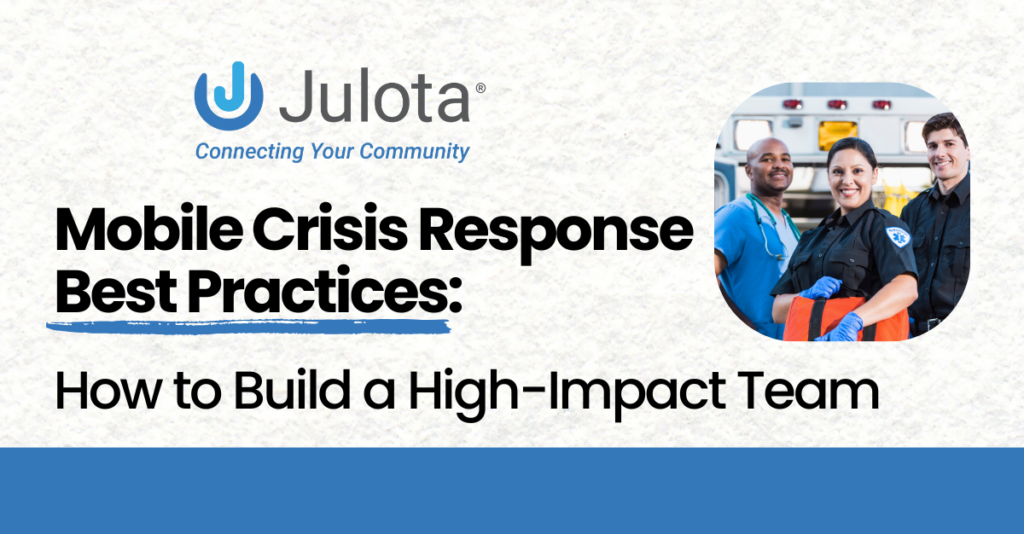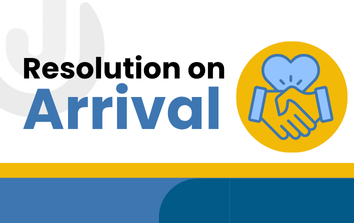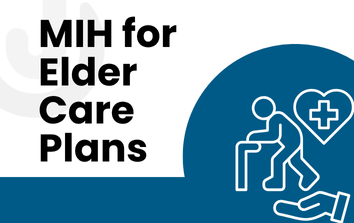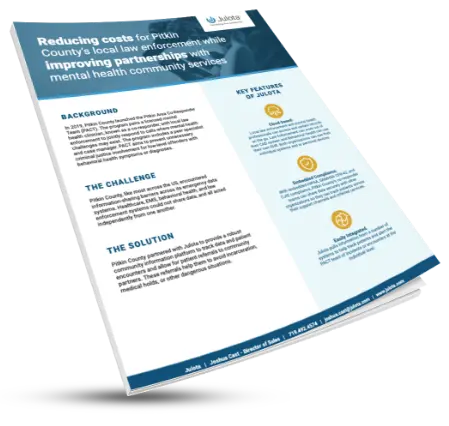Whenever someone embarks on a new endeavor, they inevitably ask: what happens if I fail? This article will dive deep into Mobile Crisis Response best practices and how to build a high-impact, high-efficiency team.

To build the best Mobile Crisis Response (MCR) Program possible, you must start with foundational principles. Any new community program should begin with a needs assessment, advance by creating a strong team, stabilize by seeking long-term funding, and flourish by collecting and sharing the correct information.
If you’re new to Mobile Crisis Response, don’t worry. Below, we’ll talk about what it is, how it works, and how to build a strong team.
Building a High Impact MCR Team
A Mobile Crisis Response team works in a community to de-escalate emergencies related to behavior, mental health, and even substance abuse. These teams are multifaceted, with multiple professionals involved. Usually, there is collaboration between police officers, mental health and behavioral specialists, paramedics, and even social workers.
The idea is to create a team that can effectively respond to incidents that would otherwise receive solely a police response (sometimes, less than optimum outcomes). For example, consider a young adult experiencing a behavioral crisis. In some communities, the only available response may be from law enforcement—sometimes leading to outcomes like arrest, simply because there are no alternative resources.
However, with a Mobile Crisis Response Team, the group would seek to de-escalate, understand the root cause, and guide the person to definitive long-term care – avoiding jail time and improving overall community health.
With this in mind, How do you build a strong Mobile Crisis Response Team? Let’s talk about it.
Here are some mobile crisis response best practices:
- Defining the Problem with a Needs Assessment
- Building the Initial Mobile Crisis Response Team
- Finding Long-Term Funding
- Collecting Data on the Programs (And Sharing that Data)
We’ll explain each of these points in detail as we go along, expounding on the nuances and important notes.
Mobile Crisis Response Best Practices: Defining the Problem with a Needs Assessment
The first step to building a high-impact team is the needs assessment. Unfortunately, this part often goes overlooked. Why? Many people are ready to “just get to work” (which is not a bad thing), or they have a unipolar idea of the problem in their community and would rather not consider any other options.
Here’s where it becomes difficult. We all know what needs to be done and what the most critical problems are; however, without a needs assessment that shows precise data on where the real issues lay, there will always be significant opinion differences- which can fracture a team.
For example, if the EMS system thinks that the Mobile Crisis Team should focus on mental health struggles, but the hospital feels that the team should only focus on substance abuse, then it will be difficult for them both to form an effective team.
For a team to function efficiently, you must have cohesion of vision (in other words, everyone must work toward the same goal).
How to perform a needs assessment requires time and consideration. If you’re curious, look at this article on how to perform a needs assessment.
Mobile Crisis Response Best Practices: Building The Initial Team
Think of some of your favorite action movies. What do most of them have in common? First, they have a big goal (needs assessment) and then build the perfect team. Action movies typically have a team comprising multiple specialties (the planner, the tech pro, the field operator, etc.). Still, the Mobile Criss Response team should have a group of professionals from various disciplines.
So, who should be on your team? Well, that will depend on what your needs assessment found. If your community has a high rate of people struggling with mental health problems, then you’ll want a psychiatric professional involved.
However, if your area is more likely plagued by drug use, then it would be wise to have a rehab professional on board. That said, many places have a team that works to correct all these issues. These teams will have a mental health pro, rehab specialist, paramedic, and more.
The idea is to give your team the best chance of correcting the problems it will face. Mobile Crisis Response teams are built to solve problems, not push them off to a different agency. So, if your team encounters something it can’t solve, consider adapting the team to fit the need.
For example, say your team primarily responds to mental health crises and substance abuse-related emergencies; however, during their responses, they are finding that many people need help with food insecurity and housing.
In this case, bringing a social worker onto the team may be prudent. Now, the people who need a broader range of social and physical help can get it.
Mobile Crisis Response Best Practices: Finding Long-Term Funding
But how are we going to pay for all of this!? It’s a good question that almost every new community response program manager has daily. So you’re not alone, but not being alone doesn’t pay the bills (or does it?). Let’s talk about a few methods to achieve long-term funding.
As we just said, not being alone is a strategy for paying the bills. By this, you should focus on forming long-term partnerships to achieve long-term funding.
Often, the first place to look is with local hospitals. The in-road is with their government-funded health reimbursement. In many cases, if a hospital has too many readmits, they receive penalties in the form of reduced reimbursement and fines.
It could be that the hospital is having too many people return with heart failure complications. If your MIH Crisis Response Program can establish a branch that deals with responding to chronic diseases, then you might be able to form a partnership with the hospital. Why would the hospital pay that money? Because it may be less than they are paying in fines for readmits.
By funding your team, they can save money. So this is something to look into.
Other ways to find funding include looking at healthcare-adjacent organizations that may be interested in your goals (reduction in drug overdoses, fewer suicidal community members, etc.). These could be local churches or even community centers. Also, talking with local gyms and fitness centers. In these cases, they may be willing to fund the program in exchange for sponsor signs on vehicles and websites.
The bottom line is that you have to get creative when it comes to funding a relatively new kind of program. For more information, please read our article on how to fund a community paramedic program.
Mobile Crisis Response Best Practices: Collecting Data on the Programs (And Sharing that Data)
Think of your Mobile Crisis Response Team as a basketball team. If a basketball team wants to get better, what do they need to do? They need to collect stats. The team needs to know their wins and losses and the strengths and weaknesses of their offense.
In the same way, MCR teams must collect and review the data on their team. They need to know if they are progressing, what strategies are working, and where their money is going.
Imagine if the basketball team tried to track stats without a scorekeeper: you’d get chaos. And no improvement. Once again, the MCR team needs a tool to track the data on their team. That’s where Julota comes into play. They act like the scorekeeper and central hub for your team. With Julota’s safe, integrated software, you can share information across different platforms, giving your team the best chance at access.
Remember, you can’t improve what you don’t measure. Julota helps you measure.
Now, let’s go over a few key points.
Key Takeaways: Building and Maintaining a High-Impact Crisis Response Team
We just said to think about your Mobile Crisis Response team as a sports team, but before we go, take a moment and think about your team as a flower. The idea is that you start small and grow toward the light. What’s the light? The light is what’s working. Don’t try to force things in the early stages.
When trying to build a team, you must be flexible. You might have thought your team would work a certain way, but there may be a different opportunity. Sometimes, people give up on building a team because they believe it’s “not working,” but the truth is that it’s not working as they had planned.
Make a plan, but plan on making changes.
Contact Julota to see how their software platform can help your Mobile Crisis Response collect data and build connections. A team member would happily listen to your specific needs and answer any questions.




